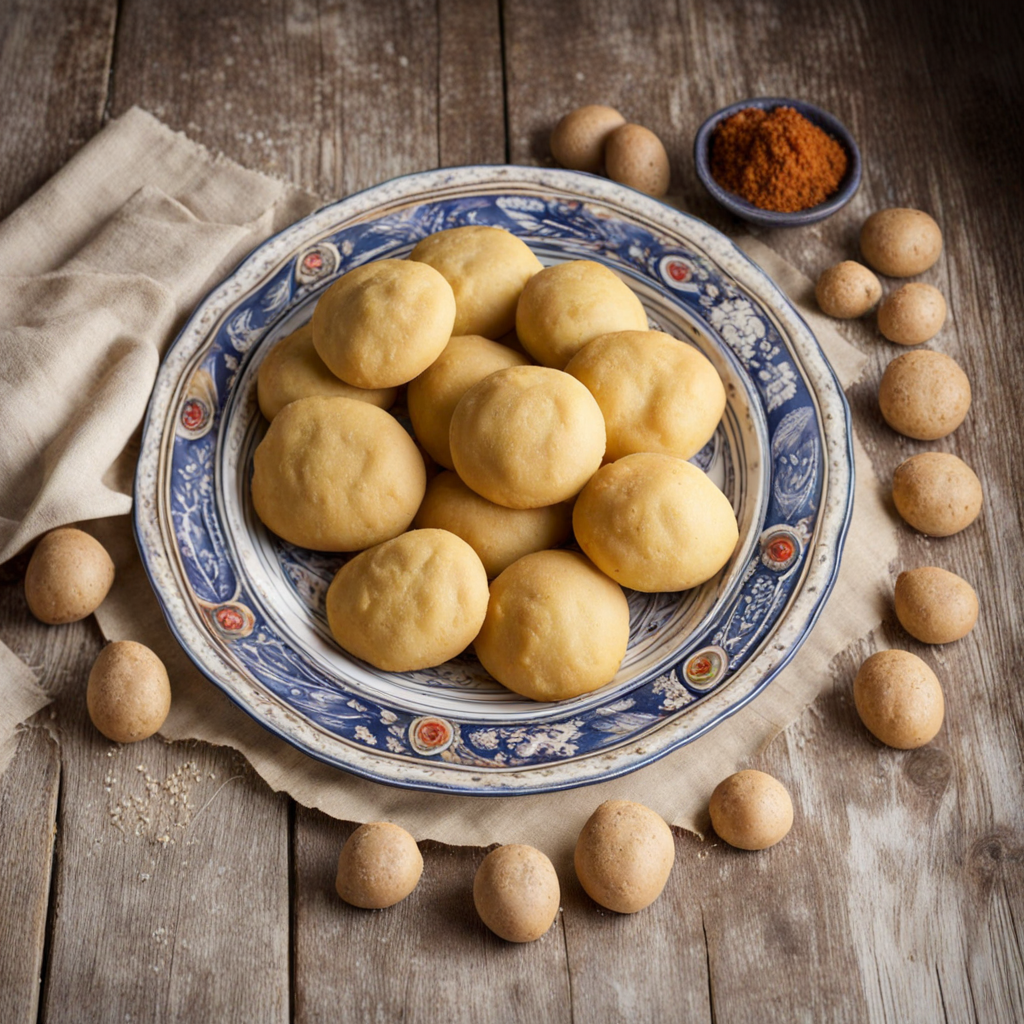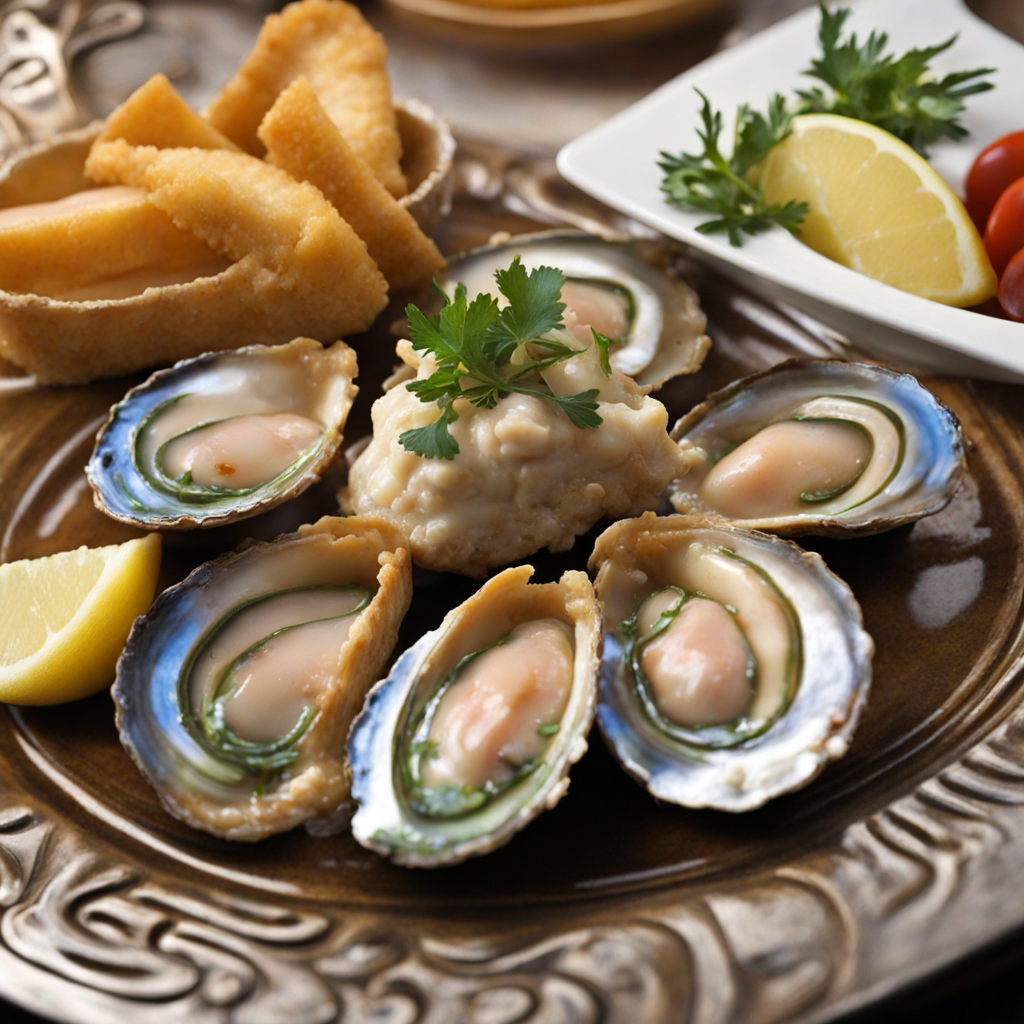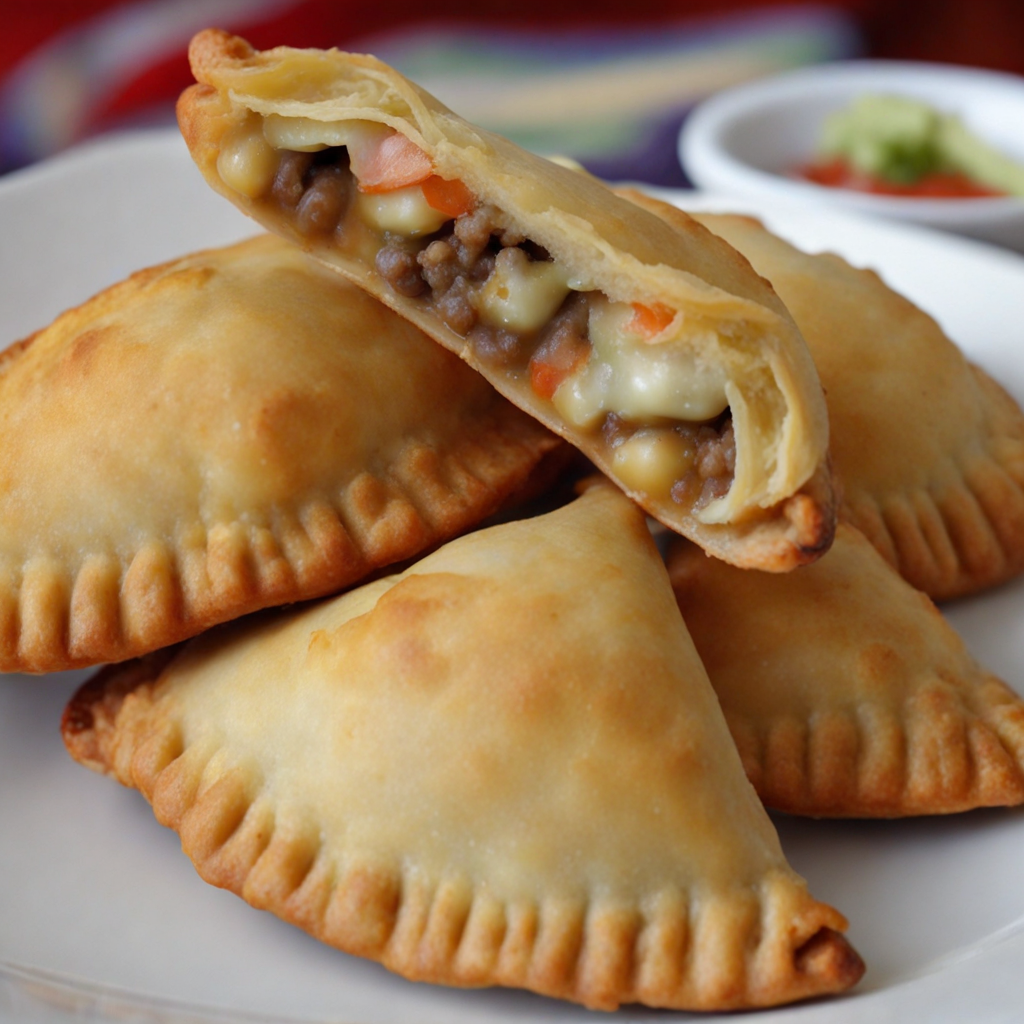Chapaleles
Chapaleles are a delightful traditional dish from the southern regions of Chile, particularly associated with the Mapuche indigenous people. These dumpling-like creations are primarily made from a base of mashed potatoes, which are mixed with wheat flour to form a soft dough. The texture is both fluffy and slightly chewy, giving them a unique mouthfeel that sets them apart from other potato-based dishes. Often seasoned with a hint of salt, they serve as the perfect canvas to absorb accompanying flavors, making them a versatile addition to any meal. Traditionally, chapaleles are shaped into small, oval forms and can be boiled or steamed, resulting in a light and airy bite. They are frequently enjoyed with a variety of toppings or sauces, such as pebre, a Chilean salsa made of tomatoes, onions, cilantro, and chili peppers, which adds a fresh and zesty contrast to the hearty dumplings. Additionally, chapaleles can be served alongside meats or used as a side dish for stews, offering an authentic taste of Chilean comfort food. As you explore chapaleles, you will discover the deep-rooted cultural significance they hold in Chilean cuisine, reflecting the rich heritage and agricultural practices of the region. Their simplicity and adaptability make them a favorite among locals, and they are often made during family gatherings and celebrations. Whether enjoyed as a standalone dish or paired with seasonal ingredients, chapaleles are sure to provide a warm and satisfying experience for anyone eager to explore the diverse flavors of Chile.
How It Became This Dish
The History of Chapaleles: A Culinary Treasure of Chile Chapaleles, the humble yet delicious potato dumplings from Chile, offer a fascinating glimpse into the agricultural traditions and cultural evolution of the region. These delightful treats, often served as a side dish or even a main course, embody the ingenuity of Chilean cuisine, with roots that trace back to the indigenous Mapuche people. Understanding the origin, cultural significance, and evolution of Chapaleles provides a richer appreciation for this cherished dish. #### Origins: A Connection to the Land The story of Chapaleles begins with the potato, a staple crop that has been cultivated in the Andean region for thousands of years. Archaeological evidence suggests that potatoes were domesticated as early as 8000 BC in what is now southern Peru and northern Chile. The indigenous Mapuche people, who have inhabited central and southern Chile for centuries, were among the first to cultivate this versatile tuber. Their deep connection to the land and its resources is reflected in the way they incorporated potatoes into their diet. Chapaleles are traditionally made from a combination of mashed potatoes and flour. Some recipes include additional ingredients like cheese, herbs, or spices, which add flavor and texture. The name "chapaleles" is believed to have derived from the Mapudungun word "chapal," meaning "to knead" or "to mix." This etymology highlights the dish's roots in indigenous culinary practices and the importance of communal food preparation. #### Cultural Significance: A Symbol of Community and Tradition In Chilean culture, food is more than just sustenance; it is a means of fostering community and sharing traditions. Chapaleles, often prepared for special occasions and family gatherings, epitomize the spirit of togetherness. The process of making Chapaleles is typically a communal activity, where family members come together to knead the dough, shape the dumplings, and cook them. This collaborative effort not only strengthens familial bonds but also serves as a vehicle for passing down culinary knowledge from one generation to the next. Chapaleles are often associated with Mapuche festivals and ceremonies, where they are served alongside other traditional dishes. The Mapuche people have a profound respect for nature, and their culinary practices reflect this ethos. The ingredients used in Chapaleles – potatoes, flour, and occasionally cheese or herbs – are often sourced from local farms, reinforcing the connection to the land. This practice of using local ingredients not only supports sustainable agriculture but also fosters a sense of identity and pride within the community. #### Development Over Time: From Tradition to Modernity As Chilean society evolved through the centuries, so too did the preparation and consumption of Chapaleles. The arrival of Spanish colonizers in the 16th century brought new ingredients and culinary techniques, which influenced traditional Mapuche recipes. While Chapaleles retained their core ingredients, the introduction of cheese, for example, became a popular addition, reflecting a blending of indigenous and European culinary practices. In the 20th century, Chile underwent significant social and economic changes that impacted its food culture. Urbanization led to a shift in lifestyle, with many people moving from rural areas to cities. As a result, traditional dishes like Chapaleles began to be adapted to suit modern tastes and lifestyles. Pre-packaged ingredients, convenience foods, and fast cooking methods became more prevalent, and while some families maintained the traditional methods of preparation, others opted for quicker alternatives. Despite these changes, Chapaleles have remained a beloved dish throughout Chile. They are commonly served in restaurants and homes, often paired with pebre (a Chilean condiment made from tomatoes, onions, cilantro, and chili) or served alongside grilled meats or stews. The dish has also found its way into contemporary culinary movements, with chefs reinterpreting Chapaleles in innovative ways, incorporating new flavors and techniques while honoring their traditional roots. #### Chapaleles in Contemporary Chile Today, Chapaleles are celebrated not only as a traditional dish but also as a symbol of Chilean identity. Food festivals and culinary events often showcase regional dishes, and Chapaleles are frequently included in these celebrations. As Chileans increasingly embrace their culinary heritage, there is a growing interest in preserving traditional recipes and techniques, ensuring that dishes like Chapaleles continue to hold a place in the national consciousness. In addition, the global food movement has sparked interest in traditional cuisines, leading to a revival of interest in dishes like Chapaleles among both locals and tourists. Travelers to Chile are often eager to sample authentic regional dishes, and Chapaleles, with their unique flavor and cultural significance, offer a perfect opportunity to experience the culinary heritage of the country. #### Conclusion Chapaleles are more than just a delicious food item; they are a testament to the rich history and cultural tapestry of Chile. Rooted in the agricultural traditions of the Mapuche people, these potato dumplings reflect a deep connection to the land and a commitment to community. While they have undergone adaptations over time, the essence of Chapaleles remains intact, serving as a bridge between past and present. As Chile continues to evolve, so too does its culinary landscape. Chapaleles stand as a reminder of the importance of tradition in a rapidly changing world, celebrating the flavors and stories that define a nation. Whether enjoyed at a family gathering, a festive celebration, or a trendy restaurant, Chapaleles encapsulate the heart and soul of Chilean cuisine, inviting all who partake to share in the rich cultural heritage of this remarkable country.
You may like
Discover local flavors from Chile







